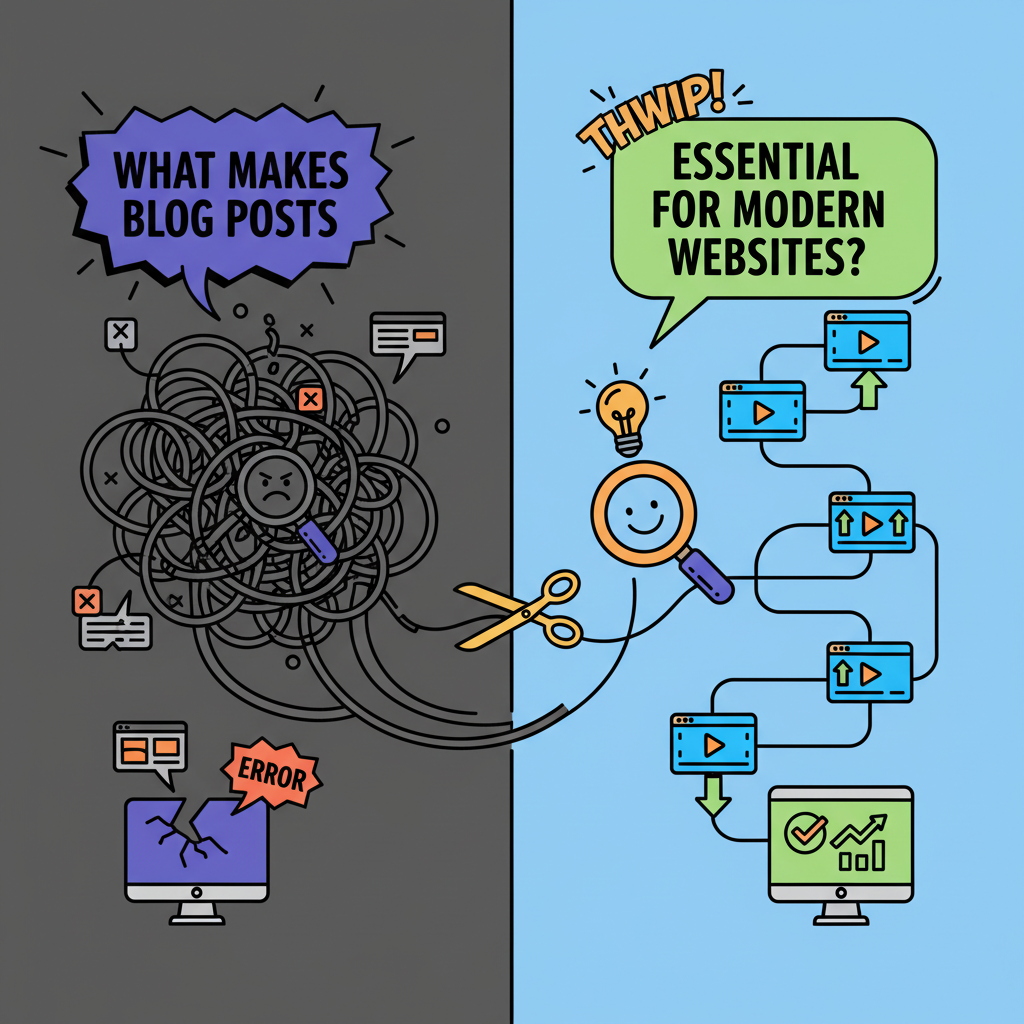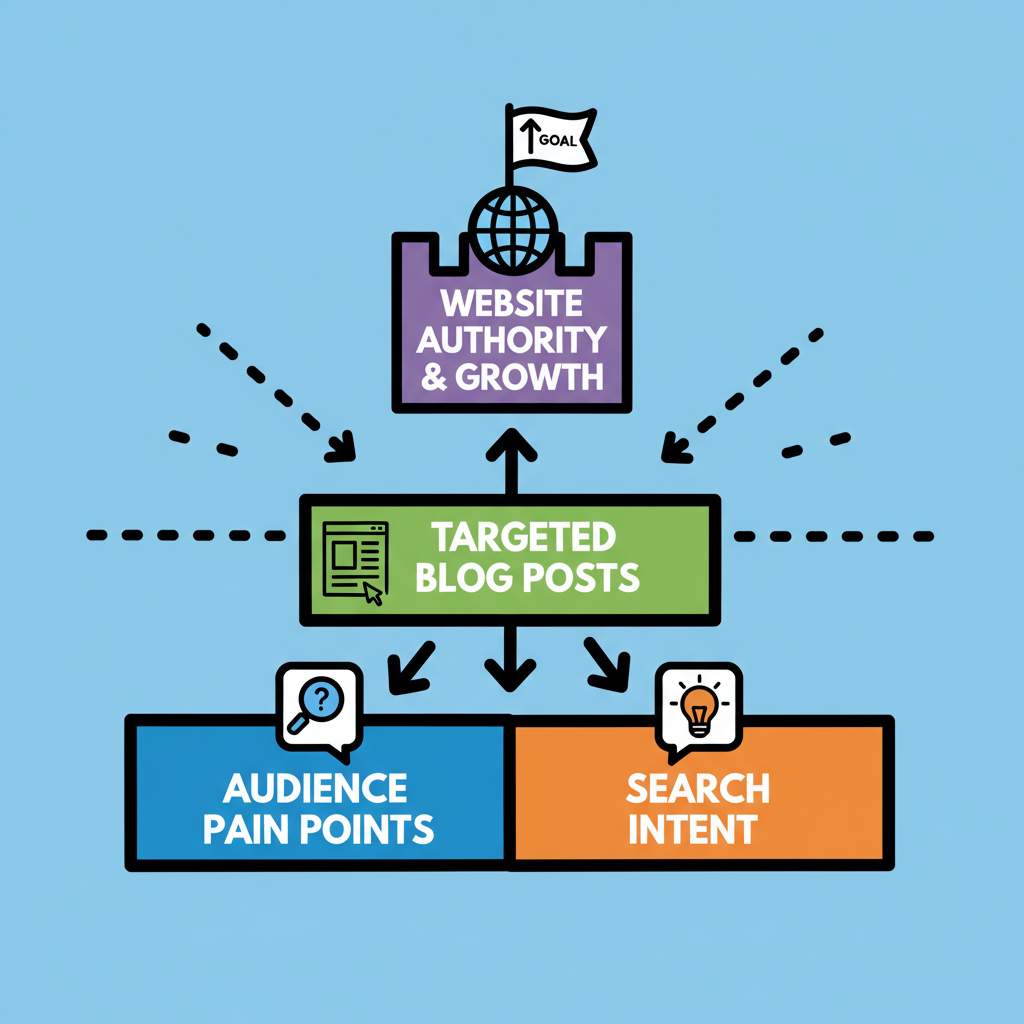What Makes Blog Posts Essential for Modern Websites?
Posted by
How to Optimize Blog Posts for Websites: A Complete Implementation Guide

Creating effective blog posts for websites requires more than just writing quality content. It demands a strategic approach that combines SEO best practices, user experience optimization, and technical implementation. Whether you're managing a corporate website, e-commerce platform, or personal blog, understanding how to properly optimize your blog posts can dramatically impact your organic search visibility and user engagement. This comprehensive guide will walk you through the essential steps to create, optimize, and implement blog posts that drive real results for your website.
What Makes Blog Posts Essential for Modern Websites?

Blog posts serve as the backbone of content marketing strategies for websites across all industries. They provide fresh, relevant content that search engines crave while offering value to your target audience. Unlike static website pages, blog posts allow you to target long-tail keywords, address specific user queries, and establish topical authority in your niche.
The integration of blog posts into your website architecture creates multiple entry points for organic traffic. Each optimized blog post becomes a potential landing page that can attract visitors through search engines, social media, and referral traffic. When properly implemented, blog posts can increase your website's overall domain authority and improve rankings for your main service or product pages.
Modern websites that consistently publish optimized blog posts typically see 55% more website visitors compared to those without active blogging strategies, according to HubSpot's marketing statistics. This demonstrates the critical role that blog content plays in driving sustainable organic growth.
How to Structure Blog Posts for Maximum Website Impact?
The foundation of successful blog posts lies in their structure and organization within your website's content hierarchy. Start by creating a dedicated blog section with a clean URL structure, such as yourwebsite.com/blog/post-title. This approach helps search engines understand your content organization and improves user navigation.
Your blog post structure should follow a logical flow that serves both search engines and human readers. Begin with compelling headlines that incorporate your target keywords naturally. Use H2 and H3 headings to break up content into digestible sections, making it easier for visitors to scan and find relevant information quickly.
Implementing Technical SEO for Blog Posts
Technical optimization forms the backbone of effective blog posts on websites. Ensure your blog posts load quickly by optimizing images, using proper compression, and implementing caching strategies. Page speed directly impacts both user experience and search engine rankings, making it a critical factor for website performance.
Meta titles and descriptions should be crafted specifically for each blog post, incorporating relevant keywords while maintaining readability. Internal linking between blog posts and main website pages helps distribute page authority and keeps visitors engaged longer on your site.
What Content Strategy Works Best for Website Blog Posts?

Developing a content strategy that aligns with your website's goals requires understanding your audience's search intent and pain points. Focus on creating blog posts that address specific problems your target market faces, positioning your website as a valuable resource in your industry.
Keyword research should drive your content planning, but avoid keyword stuffing. Instead, focus on semantic SEO by incorporating related terms and phrases naturally throughout your blog posts. This approach helps search engines better understand your content's context and relevance.
The most successful website blog posts combine educational value with subtle promotion of your products or services. This balance ensures that readers receive genuine value while gradually building trust in your brand. Understanding organic SEO strategies can help you create content that ranks well naturally without appearing overly promotional.
| Blog Post Element | Optimization Best Practice | Impact on Website Performance |
|---|---|---|
| Headlines | Include target keywords naturally | Improves click-through rates by 15-25% |
| Meta Descriptions | 150-160 characters with compelling CTA | Increases organic CTR by 5-10% |
| Internal Links | 2-3 relevant links per 1000 words | Reduces bounce rate by 10-20% |
| Image Optimization | Alt text and compressed files | Improves page speed by 20-30% |
| Content Length | 1500-2500 words for competitive topics | Higher ranking potential for long-tail keywords |
How to Optimize Blog Posts for Different Website Types?
Different website types require tailored approaches to blog post optimization. E-commerce websites benefit from product-focused blog posts that address customer questions and showcase use cases. These posts should include relevant product links and buying guides that naturally lead visitors toward purchase decisions.
Service-based websites should focus on educational content that demonstrates expertise and builds trust. Case studies, how-to guides, and industry insights work particularly well for establishing authority and attracting potential clients through organic search.
Corporate websites can leverage blog posts to humanize their brand and share company news, industry perspectives, and thought leadership content. This approach helps build relationships with stakeholders while improving search visibility for brand-related queries.
Measuring Blog Post Performance on Your Website
Tracking the right metrics helps you understand how your blog posts contribute to overall website success. Monitor organic traffic growth, time on page, and conversion rates to gauge content effectiveness. Use tools like Google Analytics to identify which blog posts drive the most valuable traffic to your website.
Pay attention to internal link click-through rates and how blog post visitors navigate to other areas of your website. This data reveals which content topics resonate most with your audience and contribute to business goals. Building sustainable organic traffic requires consistent monitoring and optimization based on performance data.
What Technical Implementation Steps Ensure Blog Post Success?

Proper technical implementation separates successful blog posts from those that fail to gain traction. Start by ensuring your website's blog section has proper schema markup to help search engines understand your content structure. This includes article schema, author information, and publication dates.
Mobile optimization cannot be overlooked, as most blog post readers access content through mobile devices. Test your blog posts across different screen sizes and ensure fast loading times on mobile networks. Google's mobile-first indexing means your mobile blog post experience directly impacts search rankings.
Social sharing integration encourages readers to distribute your content, expanding your website's reach beyond organic search. Include social media buttons and optimize your blog posts for sharing with compelling headlines and images that display well across different platforms.
How to Scale Your Website's Blog Post Strategy?
Scaling blog post production while maintaining quality requires systematic processes and tools. Develop content templates that ensure consistency across all blog posts while allowing for topic-specific customization. This approach speeds up creation while maintaining your website's brand voice and style.
Content calendars help you plan blog posts around seasonal trends, product launches, and industry events. This strategic timing maximizes the impact of your blog posts and ensures consistent publishing schedules that search engines and readers expect.
Consider implementing automated SEO tools that can help optimize your blog posts during the creation process. Automated SEO solutions can streamline technical optimization tasks, allowing you to focus on creating valuable content that serves your website visitors.
Conclusion
Optimizing blog posts for websites requires a comprehensive approach that balances technical SEO, user experience, and valuable content creation. By following the strategies outlined in this guide, you can create blog posts that not only rank well in search engines but also drive meaningful engagement and conversions for your website.
The key to long-term success lies in consistency, measurement, and continuous improvement. Start implementing these optimization techniques with your next blog post, and gradually refine your approach based on performance data and user feedback. Remember that effective blog posts serve as valuable assets that continue generating traffic and leads for your website long after publication.
Ready to transform your website's blog strategy? Begin by auditing your existing blog posts using these optimization criteria, then create a content calendar that incorporates these best practices for future publications.